The most expensive bonsai tree ever sold is certainly worth exploring. Not only are bonsai trees stunningly beautiful, with their miniature size and unique outdoor and indoor growth capabilities, but some of them can fetch millions! The amount a particular tree will bring in all depends on its type, rarity, age, and the resources invested into growing it.
If you’re curious about the costliest bonsai out there, read on to learn more about these remarkable plants and why they come with such a hefty price tag. With this information in hand, you’ll be better equipped to decide whether investing in one is wise for you.

Which is the Most Expensive Bonsai Tree Ever Sold?
The priciest bonsai tree in the market was a 250-year-old juniper sold in 1981 for a whopping $2M. Unfortunately, we couldn’t find any details about the tree’s buyer and seller or what happened to it after its sale.
Today, the Kato family’s 1000-year-old juniper bonsai, with a $2M price tag, is the most expensive bonsai tree and could be worth more than your home. It sits in the Mansei-en Bonsai nursery, which has been its home for the past millennium. Given its species, age, and the resources put into maintaining it, it’s easy to grasp why it’s the world’s most prized bonsai tree. Check out these three other costly bonsai trees:
Japanese White Pine Bonsai Tree – $1.3 Million

This incredibly rare and beautiful Japanese white pine bonsai tree has set a record as the most expensive bonsai tree ever sold.
©Creative Commons Attribution-Share Alike 3.0 – Original / License
In 2011, an 800-year-old Japanese white pine bonsai tree sold for an insane $1.3 million at the Asia-Pacific Bonsai and Suiseki Convention & Exhibition. While the world knows the plant’s seller was Seiji Morimae’s S-Cube, the buyer remains unknown. Nonetheless, the white pine bonsai tree was applauded for its excellent health, characterized by its huge size and remarkable trunk.
Yamaki Pine Bonsai Tree – $1 Million

The main attraction of this bonsai is its unique shape with curved trunk and branches that resemble a mountain landscape.
©BestPix/Shutterstock.com
In 1976, Masaru Yamaki sent this now over 400-year-old pine bonsai to the United States as a gift for the Bicentennial. It’s particularly famous for surviving the atomic bombings of Hiroshima. The world only discovered the tree’s real history in 2001 when Yamaki’s grandchildren stopped by the National Arboretum to check on it. Today, you can only take this bad boy home if you’re ready to part with $1 million.
Japanese Black Pine Bonsai Tree – $1 Million
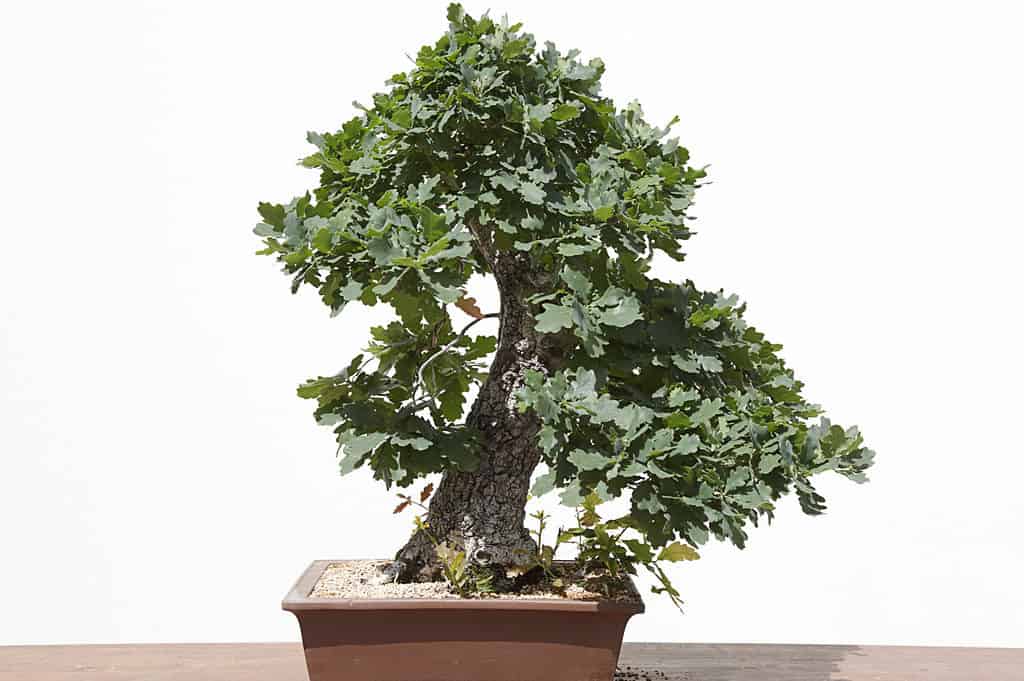
This masterpiece stands as a testament to the artistry of traditional bonsai cultivation techniques that have been passed down through generations.
©Raquel Pedrosa/Shutterstock.com
Like the Yamaki pine bonsai, the Shunka-en Bonsai Museum’s black pine bonsai is worth $1M. It has been displayed at many exhibitions across the country, but no one has bought it yet, so it’s still in the hands of the Tokyo-based bonsai garden.
Should You Get a Bonsai Tree?
The popularity of bonsai trees has surged tremendously within the past few years. Whether you’re a passionate collector or homeowner looking for an indoor plant, these beautiful plant species are the perfect addition. Here’s why:
They Purify the Air
According to statistics, air pollution accounts for 11.65% of deaths worldwide. But what if we told you that you could avoid this form of contamination by keeping a bonsai tree in your home? Like all plants, the species purifies the air by leveraging photosynthesis to convert carbon dioxide into oxygen. As a result, this protects you against conditions such as fatigue, sore throat, coughs, and breathing complications, guaranteeing good health — the ultimate precursor to a long life.
They Boost Your Mental Health
Studies indicate that interacting with nature positively impacts your mood, enhancing your mental health. Between balancing your work and personal life and caring for your home, you might lack enough time for your 30-minute daily walk. But you can make up for it by spending time with your bonsai tree indoors or outdoors. Pruning the plant alone improves your focus and self-awareness, which are handy for mental clarity.
The art of nurturing a bonsai tree is also calming. Therefore, it lowers your blood pressure and the chances of psychological stress. With good mental health, you can:
- Better handle life’s stressors, such as job challenges, financial problems, and family disputes.
- Develop healthier professional and personal relationships.
- Become more productive at work.
- Focus and easily smash your short-term and long-term goals.
- Enjoy a higher quality of life.
They Encourage Personal Growth
Some people keep bonsai trees at home because they prompt self-development. Think about it; these plants require years of care to grow and remain healthy, cultivating patience.
On top of that, the trees nurture self-confidence as you must make many important decisions regarding caring for your treasure and constantly develop new maintenance techniques throughout the years. Eventually, all these positive aspects become a part of your personality, enabling you to become a better person.
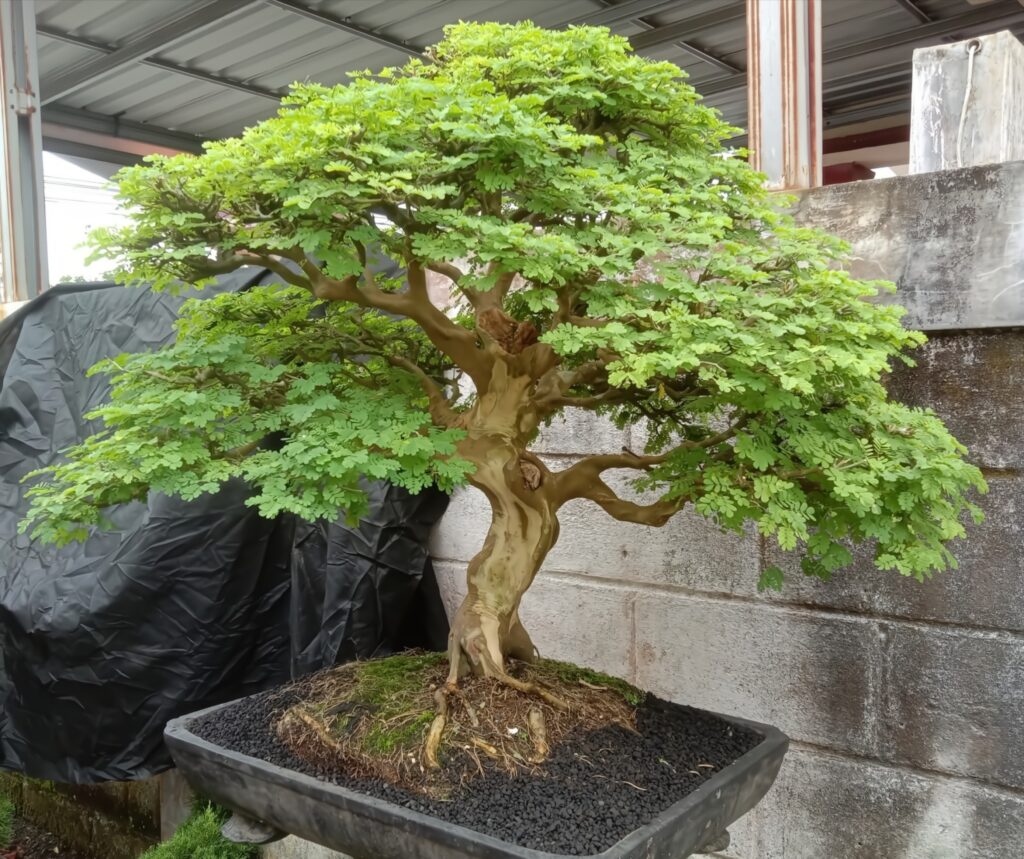
Bonsai trees are living works of art that require careful and sustained care over time. This calming hobby can help to encourage personal growth by teaching patience and creating a sense of mindfulness.
©Yei Kuye/Shutterstock.com
They Increase Your Home’s Aesthetic Appeal
Although bonsai trees are small, they look stunning, explaining why many homeowners get them as indoor plants. Once you buy yours, keep it in a place where it’ll access a lot of light, like near a window. The area should also have a constant temperature to facilitate the species’ growth.
Consider the ficus bonsai if you’re investing in a bonsai tree for aesthetic purposes. It’s an excellent choice because it’s incredibly resilient and can survive in the least humid areas. Add its ease of maintenance into the bargain, and you have one of the best indoor plants, even for beginners.
Moreover, bonsai trees make great house plants because they occupy minimal space, especially when only a few years old. Unlike alternatives like Monstera deliciosa (the Swiss cheese plant) and Calathea orbifolia, you don’t have to clear a corner of your living room to accommodate them, increasing their convenience.
They Last Long
If you’re looking for a long-term companion, bonsai trees should top your list of options. These species almost always outlive their owners. For example, the ficus bonsai tree in Crespi’s Italian Bonsai museum is over 1,000 years old and has lived longer than the most expensive specimen, the Kato family’s juniper bonsai. Undoubtedly, a bonsai tree can be that family heirloom that your folks will cherish centuries after you’re gone.
They’re Lucrative
If you don’t need a house plant but you’re hunting for a worthwhile investment that could potentially bring massive returns — get a bonsai tree. Some species only cost a few hundred dollars, while others are worth up to $2M!
Ensure you understand the factors affecting a bonsai tree’s value before sinking your money into the plant to make a profit. For instance, an older, rare species like the 800-year-old Shunkaen bonsai is worth more than a popular 100-year-old pine. Therefore, buying the former is wiser because it improves your chances of raking in more cash.
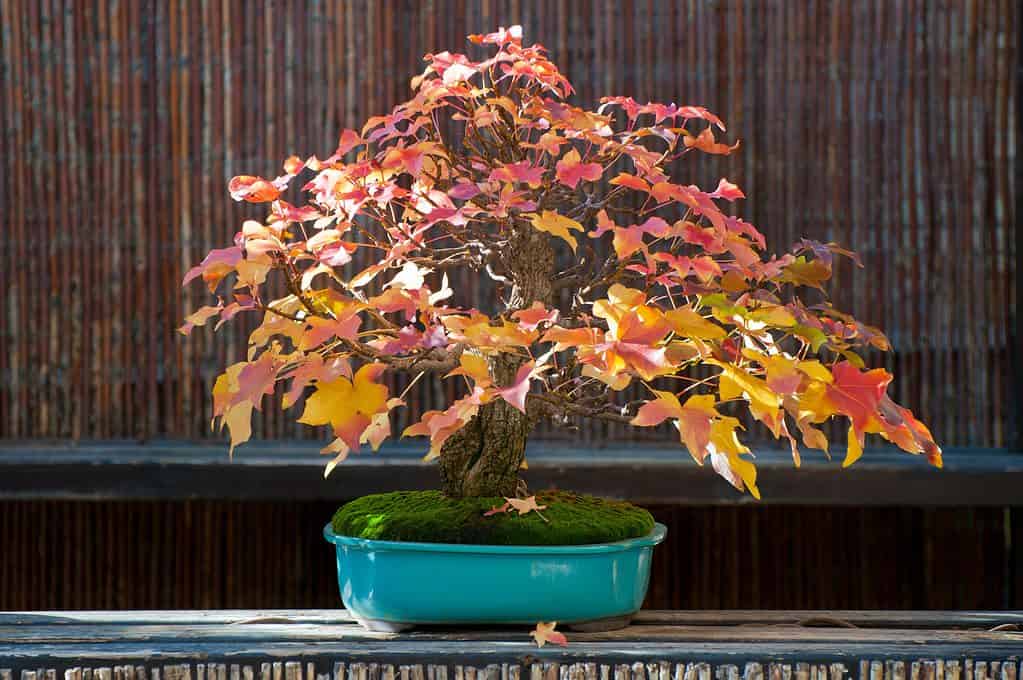
This is a Liquidamber bonsai. With its graceful structure, this tree adds beauty and elegance to any garden or living space.
©J.Blanco/Shutterstock.com
5 Things to Know Before Buying a Bonsai Tree
Are you excited to get your first bonsai tree? Considering the species’ benefits, it’s understandable. But you must grasp the following five things before choosing the plant to take home.
Some Bonsai Trees are Unhealthy
Over 20 varieties of bonsai trees exist. But some aren’t worth your money because they’re unhealthy. Watch out for the following signs to confirm the plant you want to buy is healthy:
- Bright green foliage with no spots
- Evenly distributed branches
- Slightly showing roots spreading out in many directions
- Strong and smooth trunk
- The leaves and stems are proportional
Unhealthy bonsai trees have droopy branches, yellowing leaves, and swollen barks. We advise you against buying the plants because there’s no guarantee you can save them, even with a proper care routine.
Your Environment Matters
Remember that where you intend to place your bonsai tree will affect its growth. While some types, like the Chinese sweet plum bonsai tree and jade bonsai tree, thrive in areas with a lot of bright light, others, such as the fig bonsai tree, enjoy being away from direct sunlight. Because the Oriental tea bonsai tree prefers warm environments, it may not be your best option if you live in an extremely cold region.
Your home’s climate should be ideal for the bonsai tree you plan to get. For instance, if it’s cold, prioritize options like maples, elm, cypress, cedars, birch, and larch. Tropical bonsai varieties include Fukien tea, bougainvillea, ficus, jade plant, Brazilian rain tree, and dwarf umbrella tree.
Bonsai Trees Boast Different Sizes
Bonsai trees come in various sizes. Some are only a couple of inches tall, while others are more than 6 feet tall if they’re fully mature (about 30 years old). Therefore, choose the plant that fits your needs or environment.
For example, size shouldn’t be an issue if you want an outdoor bonsai. However, indoor options should only be about 65-68cm tall unless you have ample space to keep them.
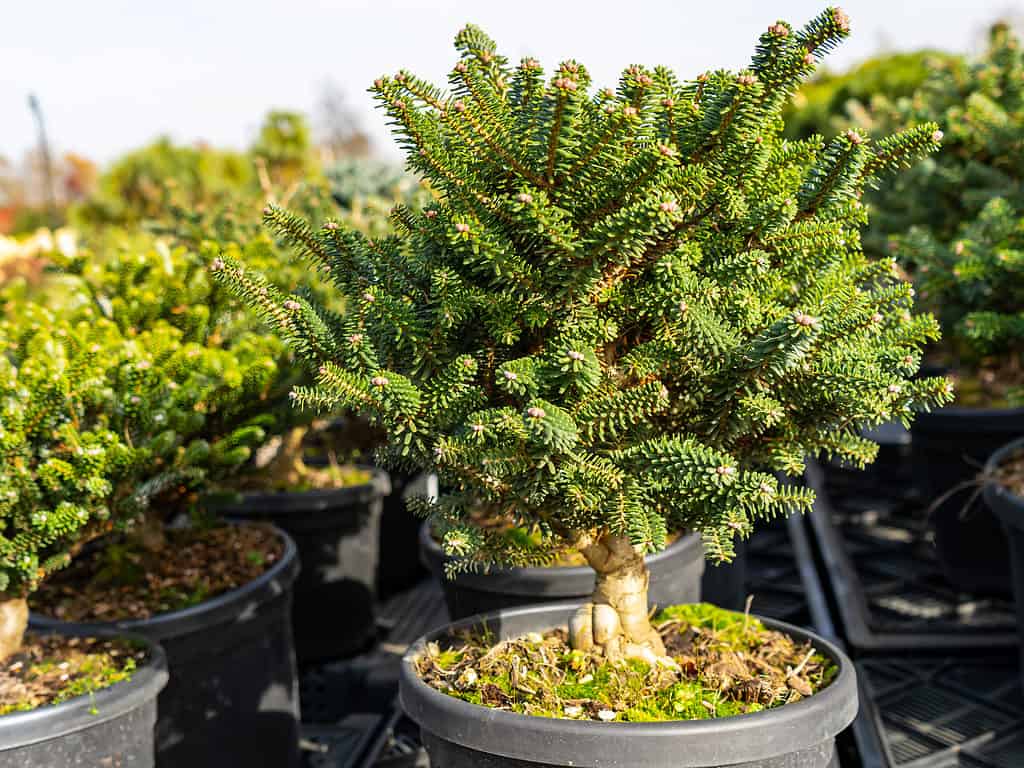
This delicate bonsai Korean fir is the perfect addition to any garden or home, adding a touch of elegance and sophistication.
©Sergey and Marina Pyataev/Shutterstock.com
Be Prepared to Deal with Diseases
Because bonsai trees are plants, they’re also susceptible to various diseases, including the following:
Sooty Mold
This fungal disease is the most likely culprit if you notice a black, ash-like coating on your bonsai tree’s leaves. Although sooty mold doesn’t necessarily harm the plant, it prevents the foliage from accessing direct sunlight, inhibiting photosynthesis. Thus, it can’t make enough food and grow properly.
What’s more, your bonsai tree will lose its aesthetic appeal once it catches this infection.
Pruning bonsai trees helps prevent sooty mold as it improves air circulation. You can also save your plant by using a soft cloth to wipe off the black, powdery substance.
Chlorosis
This disease causes the bonsai tree’s leaves to turn yellow due to a lack of enough chlorophyll. It destroys the plant’s root system and prevents the proper distribution of important nutrients like iron, hindering normal growth.
There are various ways to treat chlorosis in bonsai trees. To begin with, apply iron chelate to heal the damaged root system. You can change the plant’s placement to increase access to adequate sunlight and facilitate photosynthesis. Regularly watering and applying nitrogen fertilizers also prevent bonsai tree foliage from yellowing.
Rust
When bonsai trees get fungal rust, they weaken and decrease their visual appeal. The most common causes of this disease are poor air circulation, unfavorably humid conditions, and infected soil or plant material.
If your bonsai tree has rust, its leaves will start dropping. You’ll also spot pustule-like growths and rust-colored patches on the plant’s stem and foliage. One of the easiest ways to treat rust in bonsai trees is to cut off the infected stems or leaves. Moreover, reduce the moisture levels around the plant and apply the appropriate fungicides to save it.
Canker Diseases
Also known as scabs, canker diseases affect bonsai in different ways. They can lead to stunted growth, swollen bark, and discolored leaves. The leading causes of canker diseases in bonsai trees are improper trimming techniques and poor fertilization, such as applying excess nitrogen. Avoiding these practices could protect your valuable plant against these deadly infections.
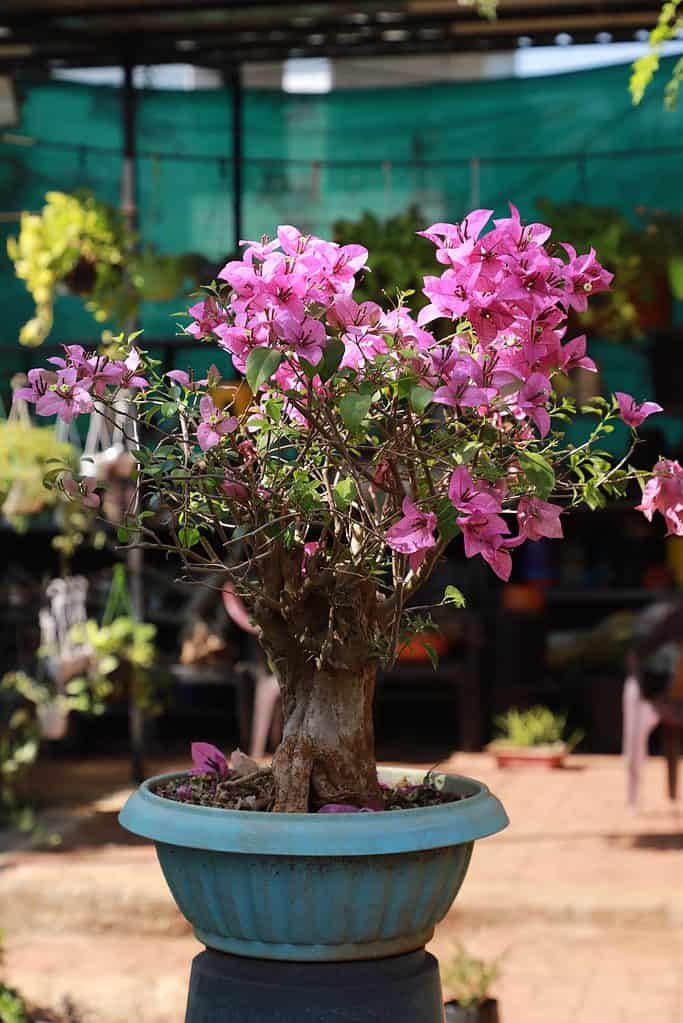
A beautiful bougainvillea bonsai, with its vibrant magenta-pink blooms, brings life and color to any space. It’s a perfect way to bring the beauty of nature indoors!
©Rtraxphoto/Shutterstock.com
Mildew
If you keep your bonsai tree in warm, humid conditions, it’ll be prone to mildew, characterized by a gray or white powdery substance on the plant’s stems and leaves. Sadly, this infection spreads quickly when untreated, weakening the tree and reducing its natural beauty. Moreover, it also makes the species prone to other diseases, increasing its chances of dying.
You can protect your bonsai tree against mildew by cleaning its environment. Be sure to prune dead leaves and branches and apply fungicide sprays. Additionally, always water the tree at the base to prevent the foliage and stems from getting wet, and closely monitor the soil to avoid moisture accumulation.
As a bonsai tree grower, you should know there’s no surefire strategy to protect your plant against infections. But taking preventative measures, such as proper fertilization and placement, will go a long way in keeping them at bay. We also recommend digging deeper into the pests and diseases likely to affect your bonsai tree. That way, if affected, you’ll have a wealth of handy information to help you treat it.
Proper Care is Paramount
As you contemplate purchasing a bonsai tree, remember that caring for the plant is essential to its growth. Therefore, it’s up to you to create the right maintenance routine to guarantee its health.
Water your bonsai tree at least once a week and fertilize it throughout the growing season.
The plant’s species, age, and health will affect how often you feed it. Unhealthy bonsai trees require more fertilizer to heal, prompting you to apply it weekly. You must transplant your bonsai tree every 2-5 years; doing so will prevent it from becoming pit-bound, which could lead to starvation.
The World’s Most Expensive Bonsai Trees
As we’ve seen above, bonsai trees are among the most expensive members of the plant universe, sometimes costlier than real estate properties. While some collectors fancy them because of their authentic representation of nature, others are lured in by their high prices. Nevertheless, these species are a favorite for many, thanks to their advantages, including better air quality, longevity, and the capability to nurture healthy habits.
Contrary to popular perception, bonsai trees are not dwarfed plants. If you’re against buying a specimen, you can grow yours using any tree species, including pine, yew, oak, larch, maple, willow, fig, and elm. Of course, you must first learn how to germinate the seeds and care for the seedling until it becomes a young pre-bonsai potential. Unfortunately, that alone could take a decade, so you must be patient.
The photo featured at the top of this post is © iStock.com/Sangwien
Thank you for reading! Have some feedback for us? Contact the AZ Animals editorial team.







